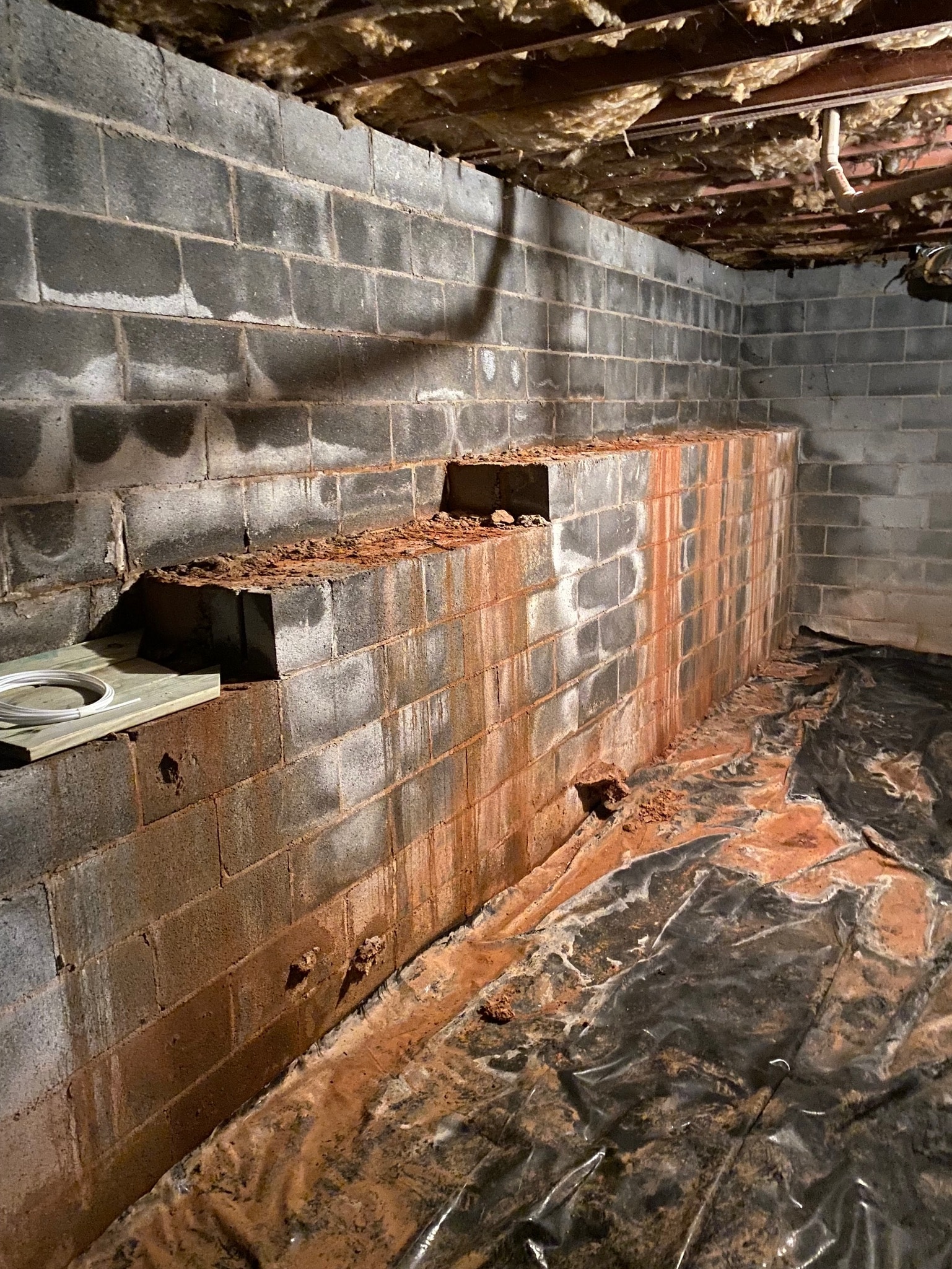
Your home should rest on a solid, even foundation, but what happens when one part of it begins to sink while the other remains stable? This alarming situation, known as differential settlement, is one of the leading causes of foundation damage and structural problems in residential buildings.
It often starts subtly: a sloping floor, a door that won’t close properly, or cracks that widen faster on one side of the house. If left untreated, differential settlement can compromise the integrity of your home and lead to costly repairs.
In this article, we’ll explore what differential settlement is, why it happens, the warning signs to look out for, and how professional foundation experts address the problem to restore stability and peace of mind.
🔑 Key Takeaways
- Differential settlement occurs when different parts of a foundation settle unevenly.
- Causes include poor soil conditions, drainage issues, and inadequate site preparation.
- Common signs include sloping floors, stair-step cracks, and sticking doors.
- Left unaddressed, it can lead to structural instability and water intrusion.
- Professional solutions include helical or push piers, underpinning, and soil stabilization.
What Is Differential Settlement?
Differential settlement happens when one section of a home’s foundation settles more or faster than another. Rather than the entire structure sinking uniformly (which is less damaging), uneven settlement creates structural stress.
This imbalance causes twisting, bending, and cracking in various parts of the home as it adjusts to the shifting foundation beneath it.
Why Does It Happen?
1. Variable Soil Composition
Different types of soil compress and retain moisture at different rates. For example:
- Clay expands when wet and shrinks when dry.
- Sandy soils drain quickly but may shift during heavy rains.
- Fill soils may not have been properly compacted.
If your foundation spans multiple soil types, each section may behave differently — leading to uneven movement.
2. Poor Compaction During Construction
If the ground beneath a home wasn’t properly compacted during construction, certain areas will compress more under the building’s weight. This often results in settlement on one side of the house.
3. Water Problems and Poor Drainage
Water is a major driver of soil movement. Excess moisture from poor drainage, plumbing leaks, or heavy rainfall can saturate the soil, making it unstable. Conversely, drought conditions can cause soil to shrink.
4. Tree Roots and Vegetation
Large trees near a home can draw moisture from the soil unevenly, drying out certain areas and creating imbalance beneath the foundation.
5. Slope and Topography
Homes built on hillsides or sloped lots are particularly susceptible to differential settlement, especially if proper site stabilization wasn’t done during construction.
Signs of Differential Settlement
Detecting differential settlement early can prevent more serious damage and expensive repairs. Here’s what to watch for:
| Symptom | Possible Cause |
|---|---|
| Cracks wider on one side of house | Foundation settling unevenly across structure. |
| Floors sloping or dipping in areas | One section of foundation sinking. |
| Doors/windows sticking or misaligned | Frame distortion from shifting foundation. |
| Stair-step cracks in brick or block | Settlement stress causing diagonal movement. |
| Gaps between walls and ceiling/floor | Foundation pulling away from home structure. |
| Plumbing leaks or drainage issues | Pipes damaged by shifting foundation. |
If these symptoms appear on just one side or corner of the house, it’s a strong indicator of differential movement.
How Differential Settlement Affects Your Home
Even slight uneven movement can lead to significant issues over time:
Structural Stress
Twisting and bending of structural components cause:
- Cracks in drywall and ceilings
- Frame separation around windows/doors
- Compromised roofline or framing
Water Intrusion
Cracks and gaps in the foundation and exterior walls can allow water to seep in, leading to:
- Mold and mildew growth
- Damp basements or crawlspaces
- Degraded indoor air quality
Decreased Property Value
Visible signs of foundation issues can deter buyers and lower appraisal values — especially if damage is unaddressed.
How Professionals Repair Differential Settlement
1. Push Piers
- Steel piers are hydraulically driven into stable soil or bedrock.
- The foundation is lifted and supported by the piers, bypassing weak soil.
- Ideal for heavy homes and deep settlement problems.
2. Helical Piers
- Screw-like steel piers are rotated into the ground until they reach stable strata.
- Excellent for lighter structures and areas with variable soil conditions.
3. Underpinning
- Involves strengthening the existing foundation by extending its depth or width.
- May include concrete pours or structural reinforcement.
4. Soil Stabilization and Drainage Correction
- Soil is treated or compacted to reduce future movement.
- Grading is adjusted to direct water away from the foundation.
- Drainage systems like French drains or sump pumps are installed as needed.
5. Slabjacking (Mudjacking)
- A cement or polyurethane mixture is pumped under a sunken slab to lift it.
- Useful for interior floors or garage slabs affected by localized settlement.
Real-Life Example: A Home Saved From Uneven Collapse
A homeowner in Roanoke, VA, began noticing widening cracks along the left side of their home. The floors in the dining room had a noticeable slope, and several doors upstairs no longer closed properly.
After calling Seal-Tite Basement Waterproofing, a professional inspection revealed differential settlement caused by improper compaction of fill soil during construction. Water from poor grading had exacerbated the issue.
Solution Implemented:
- Push piers were installed along the affected side of the foundation.
- The foundation was gradually lifted back to level.
- Exterior grading and drainage were corrected to prevent future erosion.
The result: structural integrity restored, doors realigned, and peace of mind for the homeowner.
FAQs: Differential Settlement
How is differential settlement different from normal settling?
All homes settle slightly over time. Differential settlement is uneven and localized, leading to structural stress and damage.
Is differential settlement dangerous?
Yes. If left untreated, it can lead to severe structural failure, including wall collapse or major framing issues.
How much does it cost to repair differential settlement?
Costs vary based on severity and method. Minor adjustments may cost a few thousand dollars; major piering and stabilization can exceed $15,000–$30,000.
Can landscaping cause differential settlement?
Yes — especially large trees, poorly designed irrigation systems, or garden beds that retain water near the foundation.
Is this covered by homeowners insurance?
Typically not. Most policies exclude damage from soil movement or poor construction. Review your policy or speak with your provider.
Conclusion: Uneven Movement Deserves Serious Attention
Differential settlement isn’t just a cosmetic issue — it’s a structural warning sign that something below your home is changing. The longer it goes unchecked, the greater the risk to your home’s safety, stability, and value.
Fortunately, modern foundation repair techniques like piers, underpinning, and drainage correction offer permanent solutions. And the sooner you act, the easier — and more affordable — it is to fix.
If you’ve noticed cracks, sloping floors, or other signs of uneven settling, contact Seal-Tite Basement Waterproofing today. Our experienced team will assess the issue, identify the cause, and recommend the best course of action to keep your home standing strong — on level ground.

Seal-tite Basement Waterproofing Co. is a full service basement environment contractor. We carry an A+ Better Business Bureau rating. We repaired over 40,000 homes and structures in Virginia, West Virginia, Tennessee, and North Carolina. We are fully insured and licensed. We have worked in all types of locations, including residential and commercial locations, government agencies, colleges, hospitals, churches, and condo associations.
Seal-tite® offers a lifetime transferable warranty. We carry a Class A Contractor’s License and we are fully insured. Our satisfied customers range from government agencies to businesses, hospitals, colleges, churches, and thousands of homeowners. Your home is probably the single largest investment you will make in your lifetime. Don’t wait, call Seal-tite® to help make your home dry, safe and livable.

